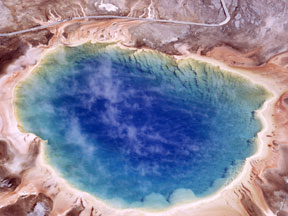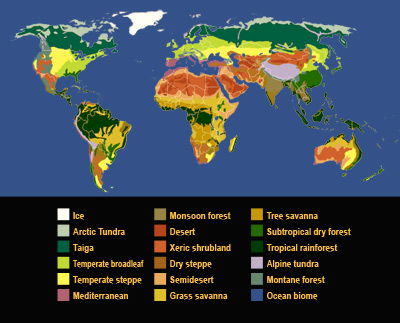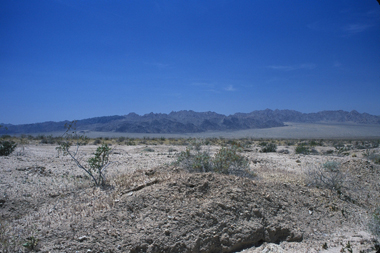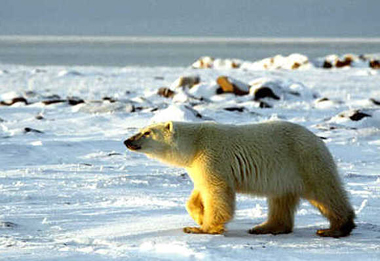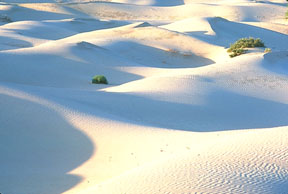Click on image for full size
Image courtesy of the U.S. Natl. Park Service, photograph by Al Mebane.
Extreme Environments - Acid, Radiation, and More!
This page describes extreme environments that are filled with acids, are blasted with radiation, are under high pressure, or are tough places for most living things in various other ways. Extreme environments are places where "normal" life finds it hard to survive. That doesn't mean that there isn't any life in extreme environments. Certain creatures can live and grow in extreme environments. Scientists have a special name for creatures that live in extreme environments. They are called "extremophiles".
What kinds of environments are "extreme"? Some extreme environments that you may know about are deserts, mountain peaks, caves, and frozen places like the Arctic and Antarctic. Some environments are very hot or very cold, extremely dry, or both.
Poisonous chemicals in some environments are deadly to most creatures. Some environments have lots and lots of salt, which dries out and kills most living things. The Dead Sea in the Middle East and Utah's (USA) Great Salt Lake are examples of bodies of water that are much, much saltier than the oceans. Some environments have high levels of acids or bases, which tend to kill most creatures. Water seeping through old mines can turn to acid. Some hot springs are also acidic, and only special types of microbes can live there.
Some environments have lots of radiation. The tops of high mountains stick up above most of Earth's atmosphere. High places get hit with ultraviolet (UV) radiation from the Sun. Caves and other places underground, as well as waste dumps created by humans, can have radioactive materials that bombard nearby creatures. There are other sorts of extreme environments in cracks in rocks underground and even inside tiny spaces within rocks.
High pressures make some environments extreme. Places far underground or deep beneath the ocean have high pressures that are deadly to most, but not all, creatures. Some environments have almost no food, making them extreme. Other places don't have oxygen, so creatures like us who need to breathe it cannot survive there. Caves and the deep ocean are always dark, so plants and other creatures that make food using photosynthesis (and other creatures that feed on them) can't live there.


